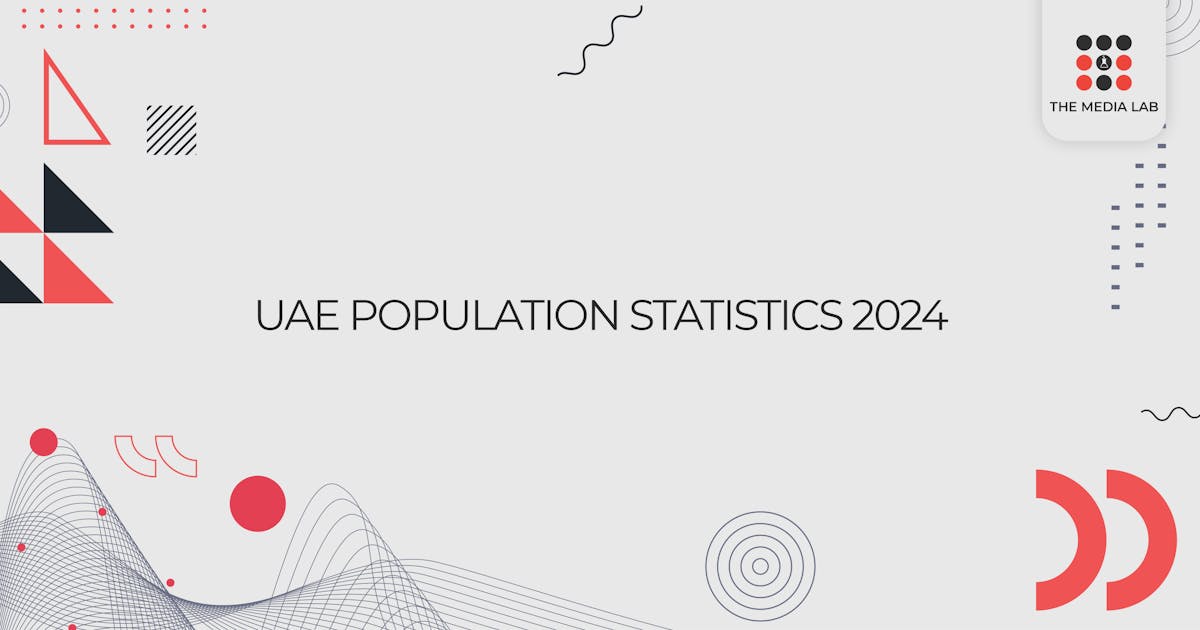Annually, we diligently compile the population statistics of the UAE, and this year is no exception. In our latest report, we have meticulously gathered and analyzed significant UAE population statistics for 2024, providing a comprehensive insight into the dynamics of the entire country. These statistics aim to offer a nuanced understanding of the demographic landscape, shedding light on key trends and changes that shape the population makeup in the UAE for the current year. Let us have a glimpse of what this post contains.
Table of Contents
What is the population of the UAE in 2024?
United Arab Emirates area with population figures
The population of the UAE cities in 2024
UAE population 2024 (Age wise)
Religion in the UAE
Literacy of population in the UAE
Quick facts about the population of the UAE
1. What is the population of the UAE in 2024?
Our latest report unveils the noteworthy population statistics of the UAE for the year 2024. Through meticulous gathering and analysis, we present a comprehensive overview that delves into the dynamics shaping the entire country. These statistics serve as a vital resource, offering a nuanced understanding of demographic trends, shifts, and other significant factors influencing the population makeup in the UAE for the present year.
Source: CountryMeters.info
Population: 10,632,115
Source: Worldometers.info
Population: 9,571,319
Source: Statista.com
Population: 10,240,000
Source: Worldpopulationreview.com
Population: 9,567,674
Source: PopulationPiramid.net
Population: 9,591,853
2. United Arab Emirates Area with the Population Figures
The United Arab Emirates is spread over an area of 83,600 square kilometers. It is having seven states of Abu Dhabi, Ajman, Dubai, Fujairah, Ras Al-Khaimah, Sharjah, and Umm Al-Quwain. The country is between Oman and the Kingdom of Saudi Arabia. It is having 1,318 kilometers of coastline over the Persian Gulf.
The estimate of UAE Population statistics in 2024 is 10.6 million. The largest three emirates Abu Dhabi, Dubai, and Sharjah are carrying over 85% of the population.
3. The population of the UAE cities in 2024
Over the past decade, the United Arab Emirates (UAE) has witnessed significant demographic shifts, propelled by remarkable developments, burgeoning tourism, and the global recognition of key cities such as Abu Dhabi and Dubai. Notably, the total population has surged by approximately 6 million people, a testament to the sustained growth and prosperity of the region. What stands out is the preeminent role of expatriates, constituting the majority of the UAE's total population.
Interestingly, the option for expatriates residing in the UAE for a minimum of 20 years to apply for citizenship has contributed substantially to the increasing population. This, coupled with a robust influx of immigrants, has led to the UAE securing the world's highest net migration rate. A key indicator of this trend is reflected in the declining fertility rate, the average number of children born per fertile woman in a year, which has shown a steady decrease over the past decade.
In contrast, life expectancy in the UAE has seen a steady increase during the same period, showcasing improvements in healthcare and living conditions. Despite this positive trend, the demographic makeup reveals that the majority of the UAE's population falls within the 15 to 64 age bracket. This underscores the pivotal role played by expatriates and immigrants in contributing to the nation's demographic diversity and numerical growth.
Dubai 1,137,347
Abu Dhabi 603,492
Sharjah 543,733
Al Ain 408,733
Ajman 226,172
Ras al-Khaimah 115,949
Fujairah 62,415
Umm al Quwain 44,411
4. UAE Population Statistics 2024 (Age wise)
Examining the demographic composition of the UAE, a significant segment is represented by individuals aged between 15 and 64, constituting a population of over 8 million. Within this age group, there are over 6 million males and over 2 million females. However, the population figures for individuals aged 65 and above reveal a comparatively smaller number. Here are the detailed statistics for the UAE population in 2024, categorized by age brackets and gender.

5. Religion in the United Arab Emirates
The United Arab Emirates stands among the Islamic nations, with a significant majority of its population adhering to the Islamic faith. Islam plays a central and influential role in shaping the cultural and social fabric of the UAE. It is noteworthy that the religious landscape in the country is characterized by a diverse mix of beliefs.
Islam holds the primary position, constituting the dominant religion embraced by the majority of the UAE population. Christianity and Hinduism, while not as prevalent as Islam, represent the second and third-largest religious communities within the country. This religious diversity contributes to the cultural richness and pluralism that define the social milieu of the United Arab Emirates. The coexistence of different faiths reflects the nation's commitment to tolerance and harmony, fostering an environment where people of various religious backgrounds can live and work together in mutual respect.
- Religion: Islam
Number of followers: 8,182,583
Percentage of total population: 76.9% - Religion: Christianity
Number of followers: 1,340,709
Percentage of total population: 12.6% - Religion: Hinduism
Number of followers: 702,276
Percentage of total population: 6.6% - Religion: Buddhism
Number of followers: 212,811
Percentage of total population: 76.9% - Religion: Religiously Unaffiliated
Number of followers: 117,046
Percentage of total population: 76.9% - Religion: Other
Number of followers: 85,124
Percentage of total population: 76.9%
6. Literacy of Population in the UAE 2024
Statistics indicate that in the United Arab Emirates, 93.83% of adults aged 15 years and above, totaling 7,912,526 individuals, are literate. Despite this high rate, approximately 519,918 adults still lack basic reading and writing skills, emphasizing the importance of continued initiatives to improve literacy nationwide
- Literacy rate for adult male population is 93.13% (5,749,113 persons) whereas 424,033 are illiterate.
- Literacy rate for adult female population is 95.76% (2,163,413 persons) while 95,885 are illiterate as per the latest reports.
Among youth aged 15 to 24 years, the UAE boasts impressive literacy rates of 99.61% for males and 99.1% for females, contributing to an overall youth literacy rate of 99.43%. These statistics underscore the nation's commitment to education and empowerment across gender lines.
7. Quick facts about the population of the United Arab Emirates
The United Arab Emirates, a nation characterized by its rich diversity, presents some noteworthy facts about its population. Ranking 89th globally in terms of population, the UAE comprises approximately 0.13% of the total world population. Despite its relatively modest percentage on the global scale, the country boasts a median age of 33.4 years, reflecting a dynamic and youthful demographic. Moreover, the UAE takes pride in a commendable literacy rate, with an impressive average of 93.8%.
- What is UAE's Current population?
The current population of UAE is 10,632,115.
- What is the Population rank of UAE in the world?
UAE stands at 89th (0.13% of the world population) population rank in the world.
- What is the Total area of UAE?
Total area of UAE is 83,600 km2 (32,278 mi2)
- What is the population density of UAE?
127.2 per km2 (329.4 people/mi2)
- What is the sex ratio in the UAE?
As per the reports, sex ratio is 2.28 (having 7,385,879 men to 3,246,140 women) in the country.
- What is the median age in UAE?
33.4 years
- What is the life expectancy age in UAE?
Life expectancy age in UAE is 76.5 years (73.9 - men, 79.2 - women)
- What is the literacy rate in UAE?
The literacy rate in UAE is 93.8 %
- How many Muslims live in UAE?
Around 8,182,583 Muslims live in UAE.
Disclaimer: The Media Lab presented this post of UAE population statistics 2024 by compiling data through different sources. However, we cannot assure the accuracy of the facts and figures reported here. We are not accountable for any errors or losses caused by the respective post.
Sources: Countrymeters, Worldometers

